Driving in winter in Iceland can be tricky, especially if you’re not used to driving in icy and snowy conditions. But that doesn’t mean that exploring the island via road trip is out of the question.
In this article, we dive deep into the season, what it brings and how you can stay safe whilst having a wonderful trip.
Should You be Driving in Winter in Iceland?
This will really be up to you. As long as you are at least 20 years old and have a valid driver’s license to show, you’re good to go.
We strongly believe that the best way to explore the island is via road trip, and that’s going to be tough to do if you’re not driving. As the island has many remote regions, public transport is probably not what you’re used to back home.
There are plenty of buses, taxis, and shuttles, if you’re sticking to the bigger cities. But if you'll be visiting the most popular tourist spots, the rest of the island will be lost to you. That being said, your safety will always take top priority.
And unless you are comfortable driving in Iceland winter conditions, you might need to opt for driving within the capital only.
During the winter in Iceland, you will experience some of the harshest weather conditions the island can dish out. There will be rain, snow, storms, and Icelandic winds that can literally blow the door off your car if you don’t hold on to it whilst getting in and out. Luckily, there are ways to prepare for this and also avoid the most extreme weather conditions.
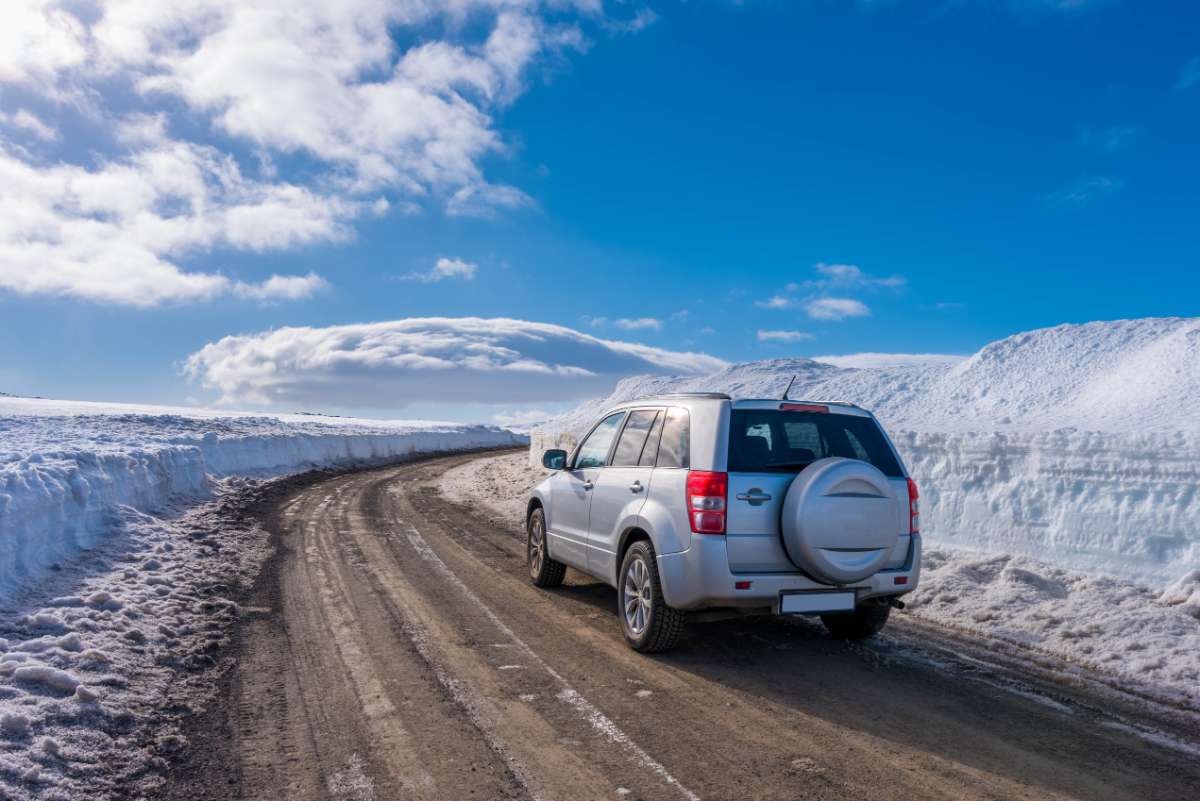
Driving with Snow in Iceland
Driving with snow in Iceland is probably the most challenging driving one can do on the island for various reasons. Cars already struggle to start in the winter cold and once the snow hit, you have even more things to worry about. Fresh snow can mean either getting stuck somewhere whilst driving or getting snowed in wherever you’re parked.
Melting snow also means wet sludge everywhere, and when it freezes again, it means dangerous sheets of ice form on the road and on driveways. There are certain ways to prepare and combat driving in the snow, such as always driving with snow tires during the wintertime.
Then there are other precautions such as driving in the right type of car, driving at a consistently slower pace. And, of course, avoiding any sudden braking or accelerating, etc.
Driving with snow in Iceland doesn’t have to be the nerve-wracking experience many think it is. Simply follow the advice in this guide and you’re in for the Iceland winter trip of a lifetime.
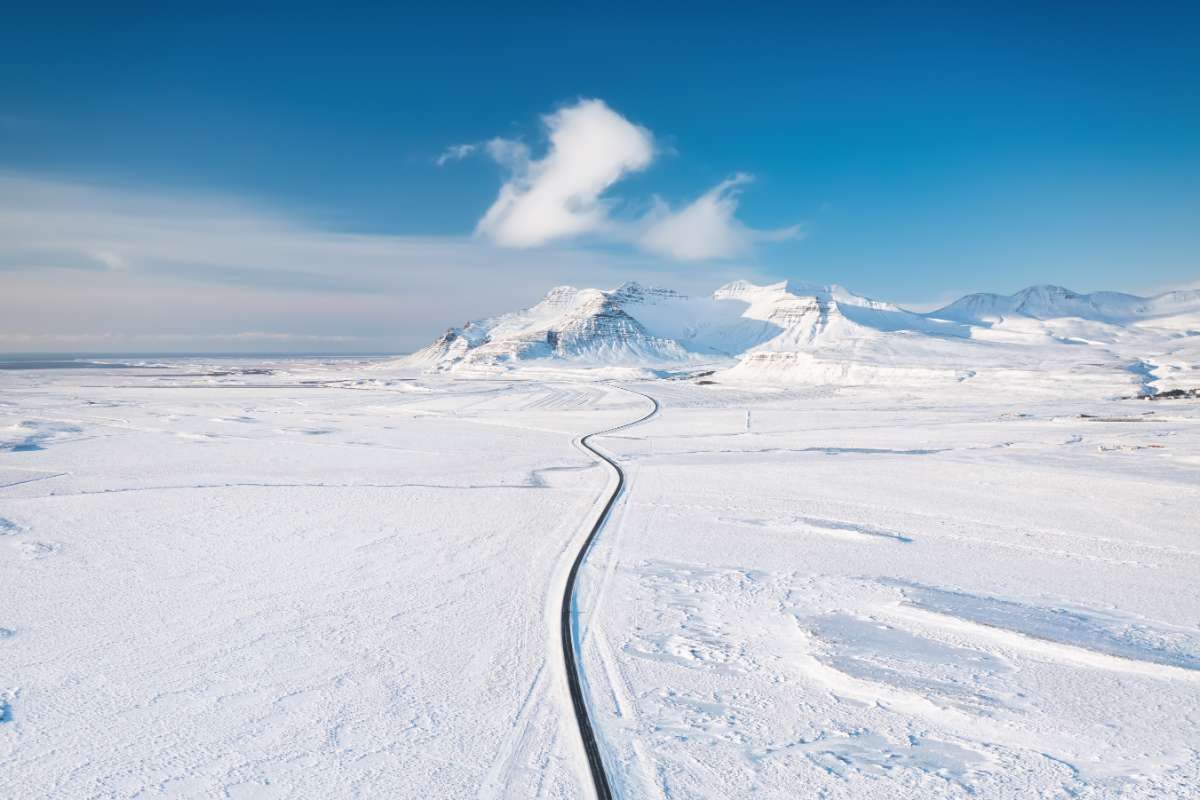
What to Pack When Driving in Winter
Winter driving in Iceland calls for a few extras. To save you some research time, we’ve created this helpful packing list that you can use as a guide:
- A spare tire and the equipment to change a tire
- A list of important numbers. The emergency number, the rental agency number, the insurance number. Also, your accommodation number (if staying at any), a family member’s number, etc.
- A road map (if you ever hit a spot without a phone or GPS signal)
- A snow and ice scraper (these are rarely provided by the rental agencies here)
- A flashlight or a headlamp
- Spare batteries for the flashlight or headlamp
- A power bank for your phone
- A first-aid kit
- A warning triangle (but these are usually provided by the rental agency)
- Emergency blankets
- Safety vests
- An extra set of warm clothes
- Extra drinking water and snacks
- A portable snow shovel (once again, this is rarely provided by rental agencies)
- A strong rope (strong enough for someone to pull the car with it when you get stuck)
- Flares
- An emergency beacon. These can be rented at various places on the island and are highly recommended if you’re planning on going hiking or if you’re traveling solo.
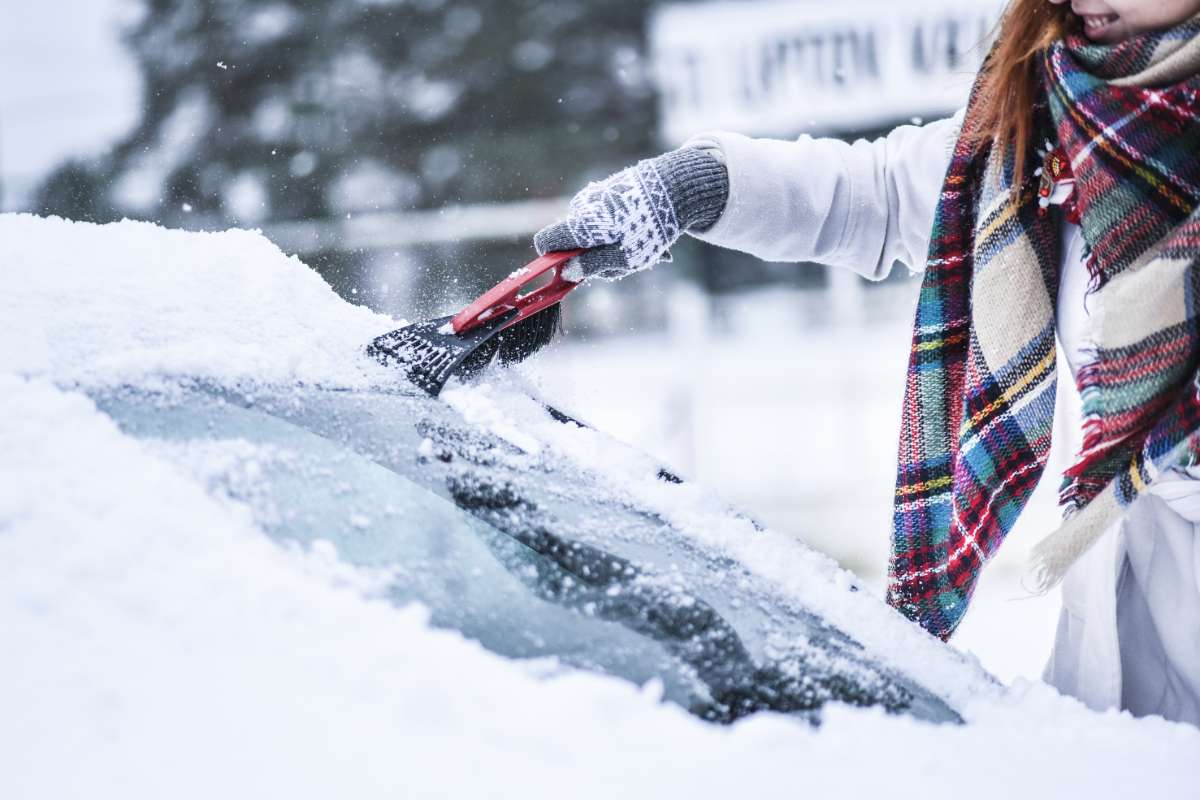
Which Car Should I Use for Driving in Winter in Iceland?
Don’t worry, Iceland may have some extreme weather, but that doesn’t mean that you need to rent a monster truck to navigate the island during winter.
And although there are ways to manage with a normal 2-wheel drive vehicle, we’ll always recommend that visitors get a 4x4 vehicle with high-quality winter tires in Iceland. When it comes to those add-on accessories, we recommend having a GPS and studded tires.
Campervans are very popular in Iceland since it saves a lot on accommodation costs and allows you to road trip in comfort. If this is what you were bargaining on, it’s still possible to do so. The wintertime will just require paying a little extra attention to it.
You’ll need to ensure that the campervan also has high-quality winter tires. You will also need to check the pipes and drains before leaving the rental agency, as they tend to freeze if not drained properly. And, finally, you’ll need to figure out how to drain the water tanks, so they don’t freeze somewhere along your trip.
Which Insurance Should I Have When Driving in Winter?
Third-party liability insurance is a legal requirement in Iceland, so this is most likely already included in your car rental. CDW (Collision Damage Waiver) that covers the damage to your own rental is also often included in your rental. The rest of the add-on insurance options will very much depend on the rental agency you choose.
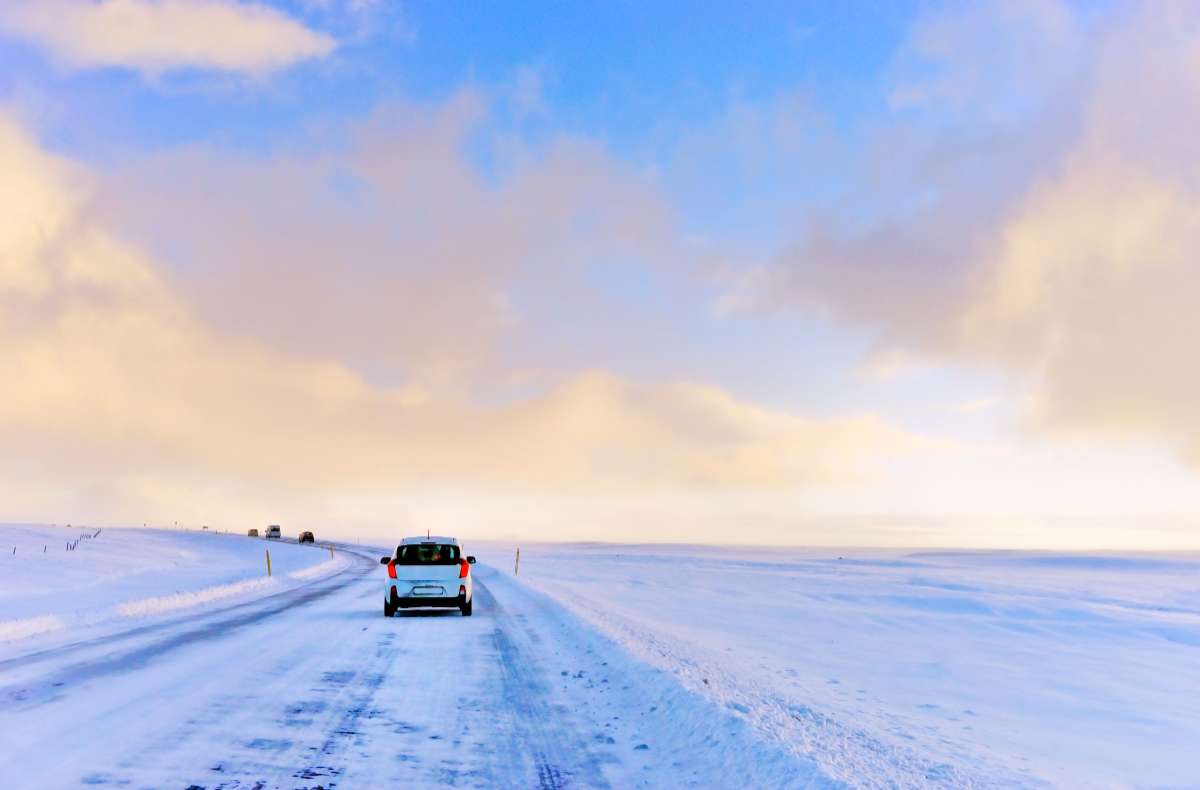
We do, however, recommend that you at least get the Sand and Ash Protection. Especially if you intend to visit the black sand beaches in Iceland as well as the Gravel Protection. These will cover you if loose rocks/gravel damages the front of the car and will also cover any damage to the body caused by sand or ash.
There are many other insurance options you can chat about with your rental agency. Such as Tire Protection, Theft Protection, etc. but the ones we’ve mentioned are essential when driving here in winter.
Which Routes to Take When Driving in Winter in Iceland
Certain roads and regions in Iceland are closed during the colder months. That's another challenge to add other than the road conditions and safety. This includes the Highlands and certain parts of the Westfjords.
Highland roads are what we refer to as the F-roads. The running joke is that if you would see how rough those roads are, you’ll understand why they’re called the F-roads. If you are absolutely dead set on driving on an F-road in Iceland, the only one open during winter is the F35 Kjalvegur Road to Gulfoss Waterfall.
If you ever come across any signs that state the road/route is closed, do not ignore them. It is illegal to ignore these signs and except for the fact that you’re playing a dangerous game. You’ll be heavily fined if found (as in remortgaging the house might be needed).
There are numerous popular road trip routes across the island, but many will need to be either postponed for the summer or slightly adjusted.
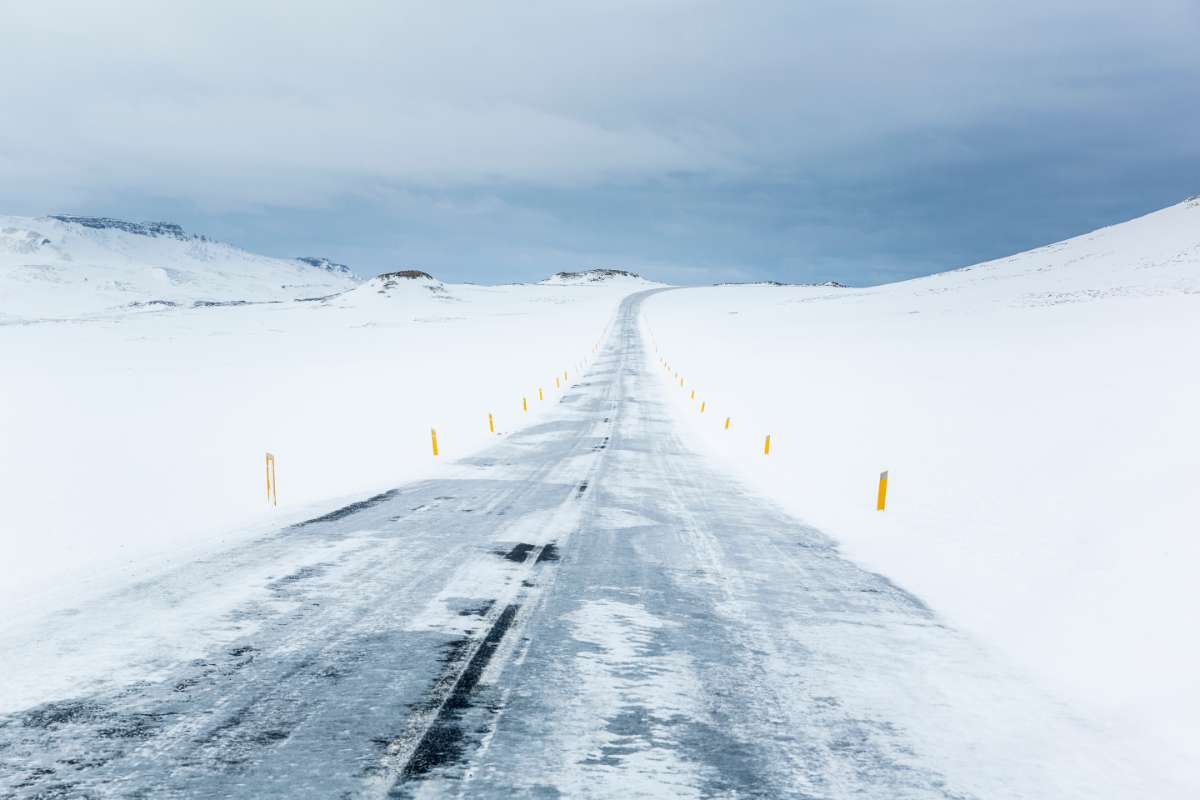
For example, the Ring Road is simply too dangerous to drive all the way around the island. If driving the Ring Road is an absolute must on your Iceland bucket list, we highly recommend that you stick to the west and south side of it.
What to Do if You Get into an Accident
If anything should go wrong whilst driving in winter in Iceland, you need to dial the emergency number; 112. You should actually save this number on your phone. Then you should phone your rental agency and tell them about the incident (whether you’re stuck somewhere, you slid on the road or you’ve been in a crash).
They will immediately advise you on what your next steps should be based on the Iceland insurance cover you have. As a rule of thumb, whenever you’ve been in an incident with a third party, you should ensure that no one is injured.
Then you need to take photos of the scene and the damage to the vehicles, as well as take the details of the third party involved.
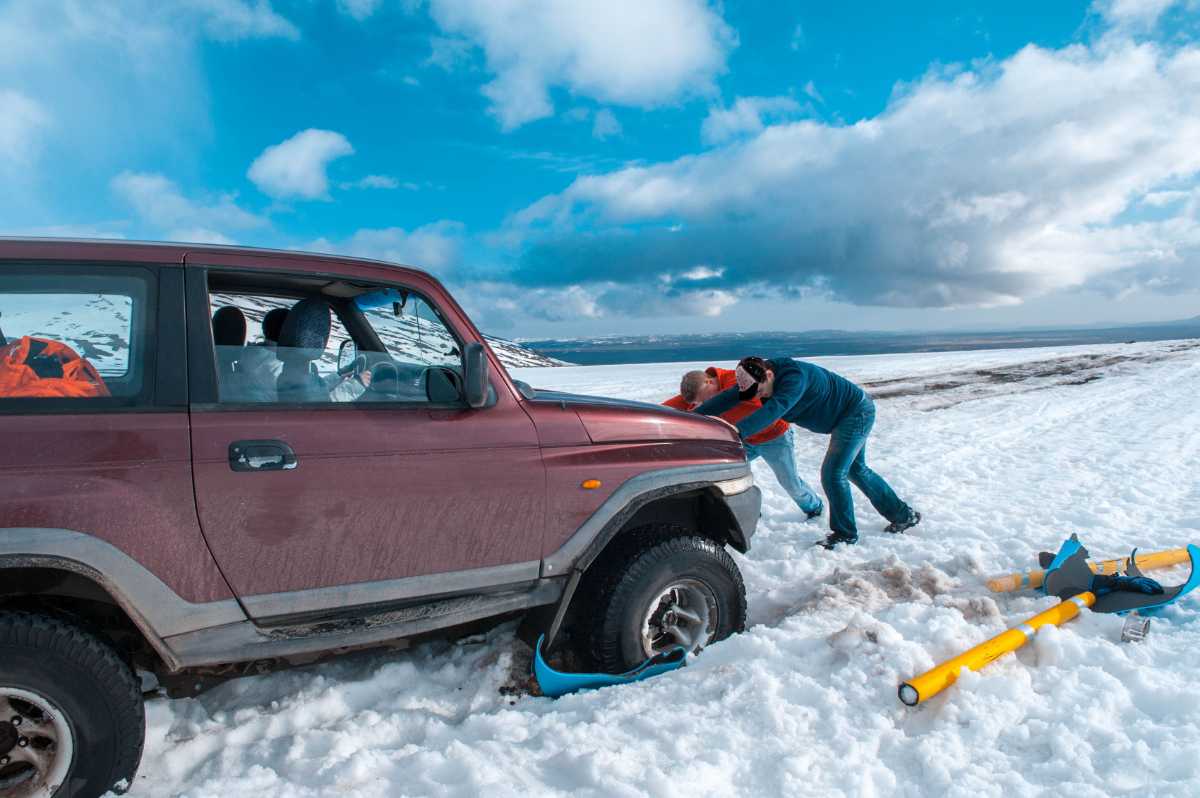
Helpful Tips for Driving in Winter in Iceland
If this will be your first trip to Iceland during winter, the following helpful tips will keep you safe and ensure that you have a wonderful time:
Keep a Close Eye on Conditions
Winter has pretty extreme elements that come out to play. In a country where the local saying is that “you can experience all four seasons in one day in Iceland”, the weather can quickly turn.
That’s why you always need to keep a close eye on the Iceland weather forecast. As well as the Iceland road conditions, so you don’t drive into a nasty surprise or a sudden road closure.
Be Flexible
Icelandic winds of 40+ km/h on the day you wanted to visit Dettifoss Waterfall or a sudden road closure on your way to the Viking Village in Harnafjördur can cause havoc on a stringent trip itinerary. If you’re planning on visiting and driving in winter in Iceland, you’ll need to be flexible and leave some room for the unexpected.
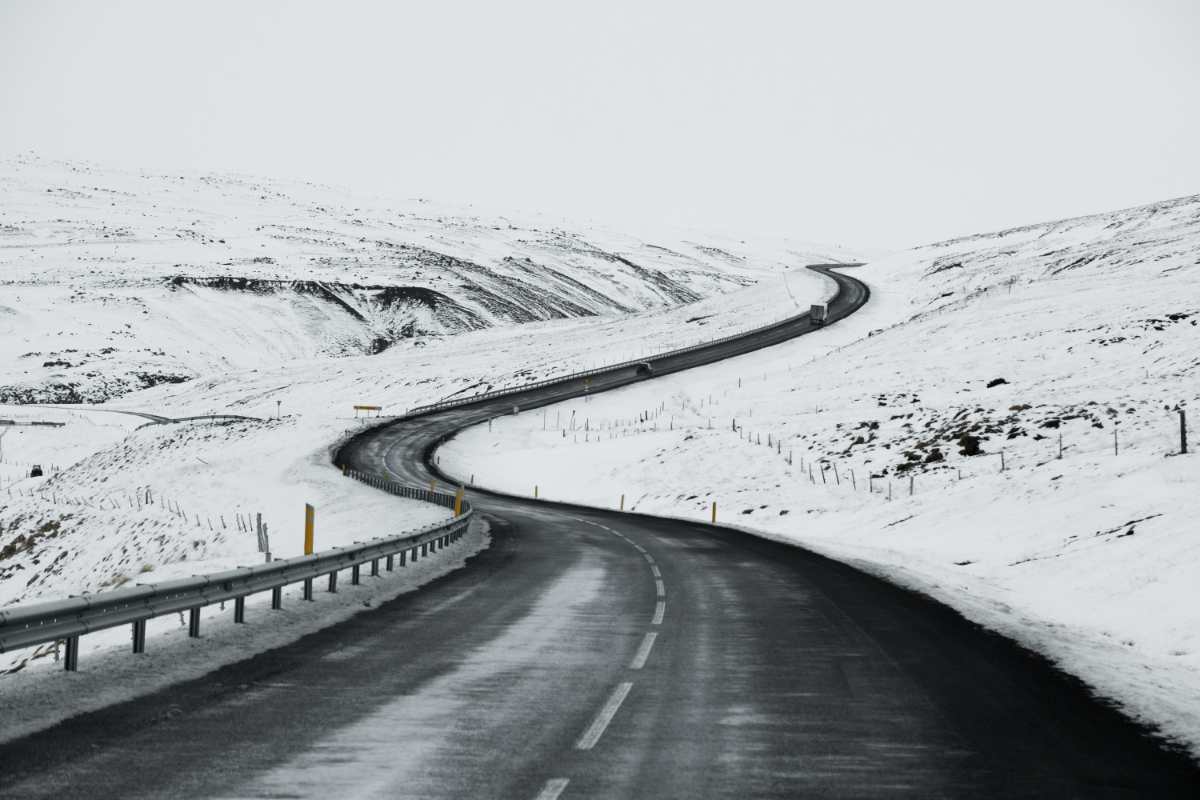
Take Special Note of Daylight Hours
Mid-winter, you’re looking at a maximum of 4 hours of daylight each day. Trust us, you do not want to misjudge the time it takes to drive in challenging winter conditions only to get stuck somewhere in a blizzard in the dark.
Do Not Even Think About Going Off-road
It doesn’t matter what possibly good reason you think you may have. DIYing your own road next to the marked road is not only asking for trouble, it’s also illegal.
This is because the environment is incredibly sensitive, especially in areas with Icelandic moss. The slightest disturbance can cause environmental damage that can take decades to recover.
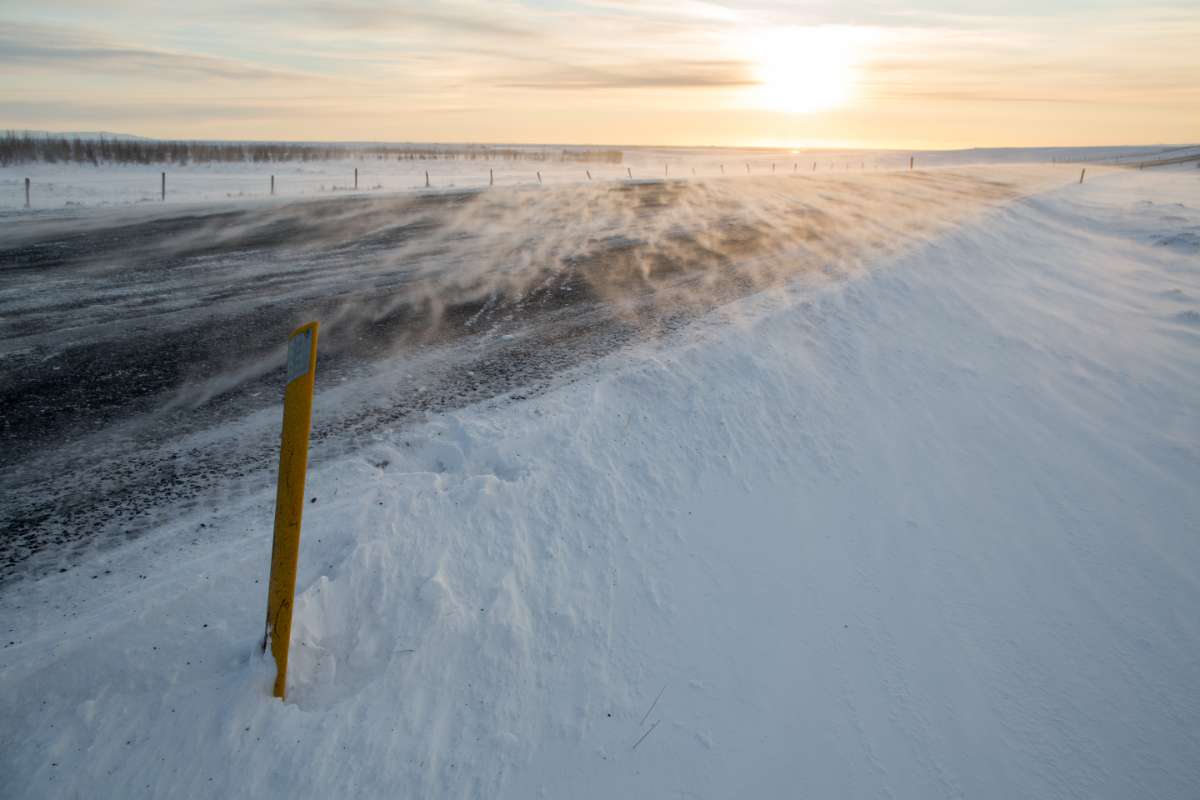
Look Out for the Yellow
Some of Iceland’s roads can already be tricky to spot in the more remote areas. Once the snow falls, it can appear as if everything is just one big blanket of snow. To ensure that you are not illegally driving off-road or getting lost, the trick is to look out for the yellow poles on the side of the road.
These yellow poles mark the edge of the road. A yellow pole with a silver line across marks which side is the right side of the road, and a yellow pole with a double silver line marks the left side of the road.
Driving in Winter in Iceland: A Breeze if You Follow Advice
Driving in winter in Iceland isn’t nearly as daunting once you know how to deal with the weather conditions. Do avoid the harsher winter elements by keeping an eye on the weather forecasts and the road conditions.
The cold weather turns the island into a winter wonderland. There are plenty of attractions, activities, and phenomena that can only be experienced during winter. So, don’t let nerves get in the way of a great vacation, rent a car in Reykjavík and start exploring. Driving in winter in Iceland is a breeze as long as you follow the advice in this guide.


 By
By


